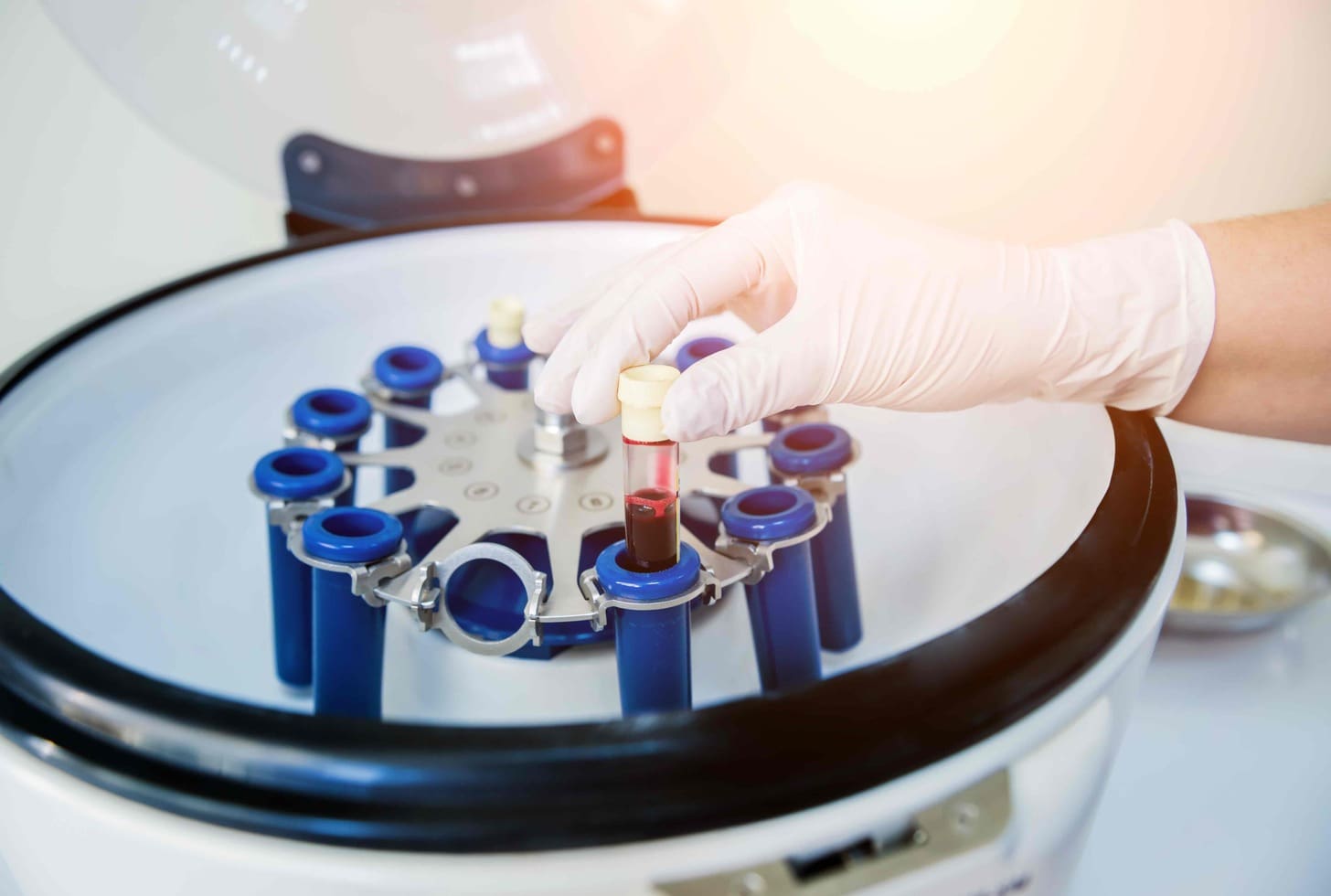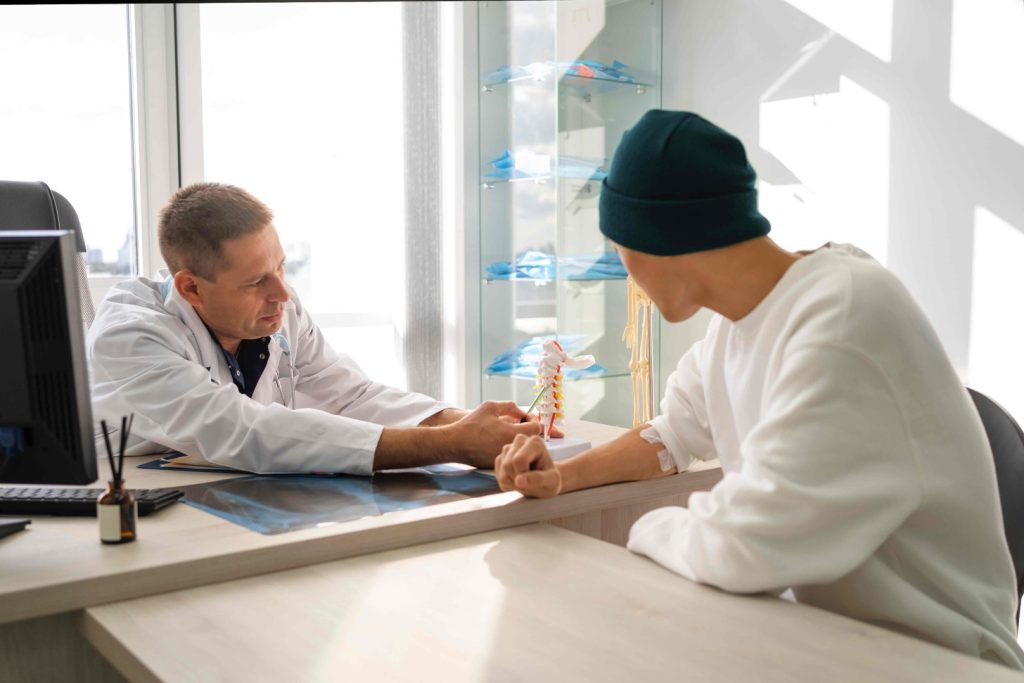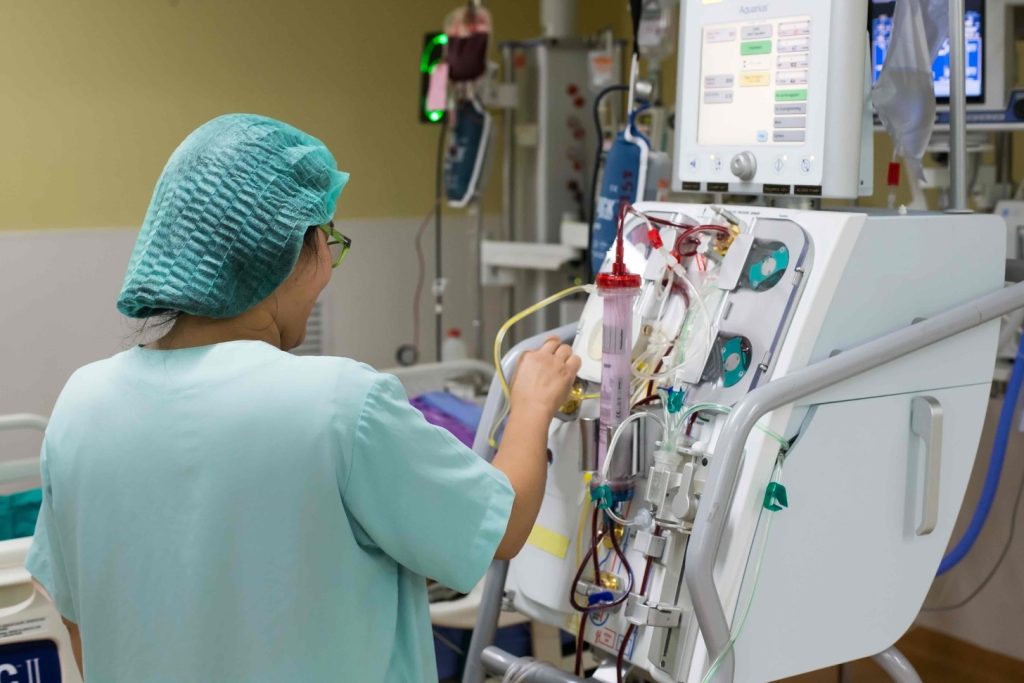
Finding the right treatment for multiple myeloma can feel like a big challenge. But, autologous stem cell transplant (ASCT) is now a key treatment for many. At Liv Hospital, we help you through every step. We make sure you get top-notch, personalized care that fits your needs.
ASCT is a detailed process. First, we take out your own stem cells. Then, we give you high-dose chemotherapy with melphalan. After that, we put the stem cells back in to help your bone marrow work right again. This method can lead to a deeper remission and better survival chances. We focus on you, giving you all the support you need on your treatment path.

It’s important for patients and doctors to understand multiple myeloma. This knowledge helps in choosing the right treatment. Multiple myeloma is a blood cancer that grows in the bone marrow.
Multiple myeloma affects plasma cells in the bone marrow. Plasma cells usually fight infections by making antibodies. But in this disease, they become cancerous and take over, harming healthy cells.
Symptoms vary but often include bone pain, tiredness, and infections. Doctors use blood tests, bone marrow biopsies, and scans to diagnose it.
Treatment for multiple myeloma has improved a lot. Now, there are many options to fit each patient’s needs. Treatments aim to control the disease, ease symptoms, and improve life quality.
First, patients usually get induction therapy. This might include steroids, chemotherapy, and targeted therapy. The goal is to lower myeloma cells and get into remission.
| Treatment Approach | Description | Benefits |
|---|---|---|
| Chemotherapy | Uses drugs to kill myeloma cells | Effective in reducing myeloma cell count |
| Targeted Therapy | Targets specific molecules involved in myeloma cell growth | Can be more precise than traditional chemotherapy |
| Corticosteroids | Reduces inflammation and myeloma cell count | Quickly effective in managing symptoms |
Autologous Stem Cell Transplant (ASCT) is an option for some patients. It uses the patient’s own stem cells, collected, stored, and then given back after chemotherapy.
Doctors recommend ASCT for those who respond well to first treatments and are healthy. The decision depends on age, health, and disease extent.
Knowing about multiple myeloma and treatments helps patients make informed choices. This includes deciding if ASCT is right for them.

Knowing about autologous stem cell transplant (ASCT) is key for those with multiple myeloma. This method uses the patient’s stem cells to replace damaged ones in the bone marrow.
Autologous stem cell transplantation collects stem cells from the patient, stores them, and then puts them back after strong chemotherapy. This lets doctors use intense treatments that can kill cancer cells better.
The main idea of ASCT is that stem cells can make new bone marrow. This is vital in multiple myeloma, as the disease harms bone marrow.
A big difference in stem cell transplants is between autologous and allogeneic. Autologous transplants use the patient’s own stem cells. Allogeneic transplants use stem cells from someone else. The choice depends on the patient’s health, disease stage, and if a donor is available.
ASCT for multiple myeloma uses strong chemotherapy and then the patient’s stem cells. This kills bad plasma cells in the bone marrow. It can lead to better responses and longer life.
The process starts with getting stem cells ready. This is done with special medicines. Then, these cells are collected through apheresis. After that, they are frozen until needed.
Understanding ASCT helps patients make better choices about their treatment.
To decide if a patient is eligible for ASCT, we look at several factors. These include age, how well the patient can perform daily tasks, and the health of their organs. We make sure the treatment is safe and works well for each patient.
Age is key when deciding on ASCT. But, we focus more on how old the patient feels, not just their actual age. We use the Karnofsky Performance Status (KPS) or the Eastern Cooperative Oncology Group (ECOG) scale to check this. A higher score means the patient is in better shape and less likely to face serious problems.
It’s also important that the patient’s organs are working well. We check the heart, lungs, liver, and kidneys to see if they can handle ASCT. We look for a certain heart function level, good lung tests, and kidney function that meets certain standards.
We also check how the multiple myeloma is doing before starting ASCT. We see if the patient has responded well to initial treatments. If they have, we consider their disease’s sensitivity to drugs and any high-risk features.
| Factor | Criteria | Implication |
|---|---|---|
| Age | Typically | Older patients may be considered on a case-by-case basis |
| Performance Status | ECOG 0-2 | Higher scores may indicate higher risk |
| Cardiac Function | LVEF > 45% | Lower LVEF may increase cardiac risk |
| Renal Function | Creatinine Clearance > 30 mL/min | Lower clearance may require dose adjustment |
| Disease Status | At least partial response to initial therapy | Stable or progressive disease may be a contraindication |
The journey to a successful ASCT starts with careful preparation and evaluation. “A well-prepared patient is more likely to have a favorable outcome,” say healthcare professionals. We’ll guide you through the key steps to prepare for ASCT, making sure you’re informed and ready.
Your first step is an initial consultation with your healthcare team. This meeting is key for discussing your medical history and current health. We’ll do blood work, imaging studies, and heart function tests to check your health and see if you’re a good candidate for ASCT.
Before ASCT, you might have induction therapy to shrink tumors and control the disease. The type of therapy depends on your health, disease, and past treatments. Our oncologists will choose the best therapy for you, preparing you for ASCT. For more on who can get a bone marrow transplant, visit this resource.
ASCT can be emotionally tough. So, getting ready mentally is very important. We suggest talking to family, friends, and mental health experts if you need to. Our team is here to help with any worries or fears, guiding you every step of the way.
ASCT also means thinking about money and logistics. Talk to our financial counselors about insurance, costs, and post-transplant care. Planning ahead can make the process less stressful and smoother.
In summary, careful preparation and evaluation are key for a successful ASCT. By understanding the steps and working with your healthcare team, you can face this complex process with confidence.
Stem cell mobilization and collection are key parts of ASCT for multiple myeloma patients. They greatly affect treatment success. We know how important this step is in the recovery journey.
Mobilization therapy is a vital step before collecting stem cells. It uses medicines to push stem cells from the bone marrow into the blood. G-CSF (Granulocyte-Colony Stimulating Factor) is often used for this.
In some cases, plerixafor is added to G-CSF. This helps more in patients who don’t mobilize well.
After mobilizing stem cells, apheresis collects them. Apheresis draws blood, separates stem cells, and returns the rest. This process can take hours and might need to be done over days.
After collection, stem cells are processed and frozen. Cryopreservation freezes them at very low temperatures. This keeps them healthy for the transplant.
Knowing about stem cell collection and mobilization can ease anxiety about ASCT. Our team is here to guide you, ensuring top care at every step.
High-dose melphalan is key in getting patients ready for autologous stem cell transplantation. It’s a chemotherapy that helps clear out cancer cells in the bone marrow before adding new stem cells.
The main goal of high-dose melphalan is to get rid of cancer cells in the bone marrow. Melphalan works by messing with the DNA of cancer cells, stopping them from growing. This is important for reducing cancer and making room for new stem cells to grow.
High-dose melphalan is given through an IV over a few days. The exact amount and time can change based on the patient’s health, age, and other factors. It’s important to watch the patient closely to handle any side effects and keep them safe.
Side effects of high-dose melphalan include nausea, vomiting, diarrhea, and tiredness. Serious issues like mucositis and infections can also happen because of bone marrow damage. We use medicines, nutrition help, and ways to prevent infections to deal with these problems. Handling these side effects well is key to keeping the patient comfortable and safe during this time.
Knowing how high-dose melphalan works in the conditioning phase helps patients get ready for ASCT. Our team is dedicated to giving full care and support every step of the way.
When looking at treatments for multiple myeloma, knowing the good and bad of autologous stem cell transplantation (ASCT) is key. ASCT is a common treatment for some patients, aiming for a cure or controlling the disease. But, it’s important to think about its benefits and risks.
ASCT can lead to better survival rates for multiple myeloma patients. It uses strong chemotherapy and then adds back stem cells collected earlier. This method can cause deeper responses and longer breaks from the disease.
Research shows that patients who get ASCT live longer than those on standard chemotherapy. This is a big plus for those who can have the treatment.
Key benefits of ASCT include:
Even with its benefits, ASCT comes with risks. Some possible problems are:
It’s vital for patients to talk to their doctors about these risks to see how they might affect them personally.
How ASCT affects a patient’s life is important to think about. Many patients do well after the treatment and see their quality of life improve. Things that can affect this include the patient’s health before treatment, any other health issues, and support during recovery.
Every patient’s experience is different, and choosing ASCT should be a thoughtful decision. Knowing the good and bad helps patients make the best choice for their treatment.
Recovering after an autologous stem cell transplant (ASCT) is key for patients with multiple myeloma. The time after the transplant is very important. A good care plan can greatly improve long-term results.
The first 100 days after the transplant are critical. Patients are watched closely for signs of new blood cell production and any problems. Engraftment, when the new stem cells start making blood cells, usually happens in 2-4 weeks. It’s best for patients to be near the transplant center for quick medical help if needed.
After the first recovery, maintenance therapy is key to keep the disease under control. This can include lenalidomide or other targeted treatments. We help patients choose the best maintenance plan based on their risk and how they did after the transplant.
ASCT can help treat multiple myeloma but has long-term side effects. These can include tiredness, nerve problems, and a higher risk of infections. We stress the need for regular check-ups to manage these side effects well. This helps improve our patients’ quality of life after the transplant.
Regular follow-ups are vital to keep track of the disease and catch any problems early. We suggest regular blood tests and bone marrow biopsies as needed. This careful monitoring helps us adjust the treatment plan as needed for the best results.
In summary, the recovery and post-ASCT care process is complex and needs careful planning and monitoring. Understanding this phase helps patients better manage their recovery and long-term survival.
Patients who have had autologous stem cell transplantation (ASCT) for multiple myeloma see better survival rates and quality of life. They need ongoing care to manage side effects and ensure the best results. This care is key to a good life after ASCT.
Those who have had ASCT for multiple myeloma should know what to expect during recovery. With the right care, many see big improvements in their health and happiness. We aim to give full support to help patients through life after ASCT.
Managing life after ASCT means regular check-ups, ongoing therapy, and a healthy lifestyle. Following the recommended care plan is vital for the best survival and quality of life. This way, patients can enjoy a fulfilling life after ASCT.
ASCT is a treatment for multiple myeloma. It uses a patient’s own stem cells. These cells are collected, stored, and then reinfused after high-dose chemotherapy. This helps restore the patient’s bone marrow.
ASCT uses a patient’s own stem cells. Allogeneic stem cell transplant uses stem cells from a donor. ASCT is chosen for multiple myeloma because it has a lower risk of graft-versus-host disease.
High-dose melphalan is used in ASCT’s conditioning phase. It kills cancer cells in the bone marrow. It is given before the patient’s stem cells are reinfused.
ASCT can improve survival rates and induce deep remission in eligible patients. It is a standard care treatment. It helps patients live longer without disease progression.
We consider age, performance status, organ function, and disease status when evaluating a patient’s suitability for ASCT. These factors help us determine if a patient can tolerate the treatment.
Preparing for ASCT includes initial consultation and testing, induction therapy, and psychological preparation. We also help with financial and logistical planning. We work closely with patients to ensure they are prepared.
Stem cells are collected through apheresis after mobilization therapy. Mobilization therapy stimulates stem cells to leave the bone marrow. The collected stem cells are then processed and cryopreserved for later use.
ASCT carries risks like infection, bleeding, and organ damage. We take steps to minimize these risks. We also manage any complications that may arise during or after treatment.
After ASCT, patients need close monitoring and care. We guide them through the first 100 days after transplant. We also discuss maintenance therapy options and managing long-term side effects.
ASCT can significantly impact a patient’s quality of life. It can improve survival outcomes but requires a significant recovery period. We work with patients to manage their expectations and optimize their quality of life.
After ASCT, patients need regular follow-up appointments. These appointments help monitor their condition, manage side effects, and adjust treatment plans as necessary. We provide a personalized follow-up schedule for each patient.
Autologous hematopoietic cell transplantation (auto HCT) is another term for ASCT. It emphasizes the use of a patient’s own hematopoietic stem cells for transplantation.
Subscribe to our e-newsletter to stay informed about the latest innovations in the world of health and exclusive offers!
WhatsApp us